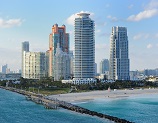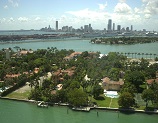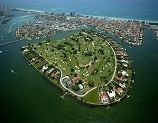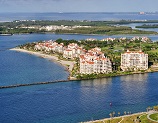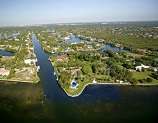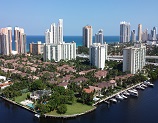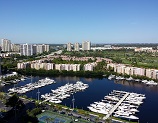Commercial Real Estate Bright Spot in National Economy
- NAR
RISMEDIA, June 15, 2006—Healthy demand for space is driving commercial real estate markets with solid fundamentals and strong investment activity, according to the latest Commercial Real Estate Outlook of the National Association of Realtors(R).
David Lereah, NAR's chief economist, said fundamentals are improving with tightening vacancies. "Rent growth in commercial space is gaining traction, although there is some softness in part of the retail sector," he said. "Commercial real estate remains a bright spot in the economy, but there are concerns over energy costs, rising interest rates and slower-than-expected job growth which could dampen future demand."
Lereah said investment considerations remain positive. "With tightening vacancies and a slowdown in speculative construction, the office market will offer respectable returns for investors," he said. "Strong international trade is supporting warehouse and distribution space, especially near port facilities. In addition, demand for rental apartments and hotel rooms is on the rise."
The NAR forecast for five major commercial sectors includes analysis of quarterly data for various tracked metro areas. The sectors include the office, industrial, retail, multifamily and hospitality markets. Metro data were provided by Torto Wheaton Research and Real Capital Analytics.
Office Market
Rising oil prices and slower job growth have dampened expectations for
the office market, but vacancy rates are still likely to drop to an average
of 12.7 percent in the fourth quarter from 13.6 percent during the same
period in 2005. Office rents are forecast to rise 4.4 percent this year.
Areas with the lowest office vacancies currently include Ventura County, Calif.; New York City; Orange County, Calif.; Fort Lauderdale, Fla.; Riverside, Calif.; and Washington, D.C., all with vacancy rates of 8.8 percent or less.
Net absorption of office space in 56 markets tracked, which includes the leasing of new space coming on the market as well as space in existing properties, should be 64.1 million square feet in 2006, down from 89.5 million last year. High construction costs are putting a lid on speculative development.
Large institutional investors and pension funds returned to the office market during the first quarter, more than doubling what they spent on office buildings in all of 2005; total investment in the first quarter was $20.5 billion.
Over the last year, the top markets for office investment were Manhattan, Chicago, Los Angeles, San Francisco, Northern Virginia and Washington, D.C.
Industrial Market
Industrial vacancy rates are forecast to decline to an average of 9.5
percent during the second half of the year from 9.9 percent in the final
quarter of 2005, with new construction increasing along with space absorption.
Trade with China continues to fuel demand for warehouse and distribution
space. Although market fundamentals appear to be healthy, industrial rents
are likely to increase only 1.9 percent in 2006.
The areas with the lowest industrial vacancies are West Palm Beach, Fla.; Los Angeles; Fort Lauderdale; Las Vegas; Miami; and Orange County, Calif., all with vacancy rates of 5.4 percent or less.
Net absorption of industrial space in 54 markets tracked is expected to be 211.0 million square feet this year, down from 290.5 million in 2005. Most of the demand is coming from users and tenants involved with the distribution of goods, but rising industrial production could bolster demand for manufacturing space, which has been lagging in recent years.
Private investment also is occurring in the industrial sector, with transactions totaling $10.5 billion in the first quarter. The top industrial investment markets are Los Angeles; Chicago; Dallas; San Diego; San Jose, Calif.; and Northern New Jersey. Some older properties in urban areas are being converted to other commercial uses.
Retail Market
With absorption matching new supply, retail vacancy rates are projected
to be fairly stable for the balance of the year, at an average of 7.6
percent in the fourth quarter, but higher than the 7.2 percent recorded
in the fourth quarter of 2005.
Higher energy costs and slowing home price appreciation will hold back consumer spending, impacting the retail sector. Overbuilding and fallout from mergers and acquisitions have impacted certain markets, including regional shopping centers. Average rent is seen to grow 0.7 percent in 2006.
Retail markets with the lowest vacancies include Las Vegas; Miami; Orange
County, Calif.; San Francisco; San Jose; and San Diego, all with vacancies
of 3.9 percent or less.
Net absorption of retail space in 54 tracked markets should be 14.1 million
square feet in 2006, down from 30.2 million last year.
Investment in retail space is cooling with just $7.4 billion spent in the first quarter, dominated by private investors; strip centers accounted for almost three-fourths of retail investment activity. The top markets for retail investment include Los Angeles, Chicago, Houston, Dallas, Phoenix, and Northern Virginia.
Multifamily Market
The apartment rental market - multifamily housing - is expecting vacancy
rates in the fourth quarter to average 5.7 percent compared with 6.2 percent
during the same period in 2005. Average rent is forecast to rise 4.1 percent
this year compared with 2.9 percent in 2005.
Conversion of apartments into condos is waning, but a slight softening in the housing market is boosting rental demand. Concerns about sustainable job growth and job security are playing a role by keeping some people in the rental marketplace.
Total investment in multifamily property was $24.0 billion during the first quarter, up 30 percent from the first quarter of 2005; seven out of ten transactions were garden-style apartment complexes. Condo converters accounted for less than 15 percent of transactions, taking a little over 30,000 units from the rental market.
The top markets for apartment investment over the last year were Manhattan, Phoenix, Los Angeles, Tampa, Orlando and Atlanta.
The areas with the lowest apartment vacancies currently include Fort Lauderdale, Northern New Jersey, Washington, West Palm Beach, Miami and Tampa, all with vacancy rates of 2.5 percent or less.
Multifamily net absorption is likely to be 256,500 units in 59 tracked metro areas this year, compared with 351,000 absorbed in 2005.
Hospitality Market
With rising construction activity, hotel occupancies are forecast at 63.4
percent in 2006 compared with 64.5 percent last year, and revenue per
available room (RevPAR) is projected to grow to $72.37 in 2006, up 7.5
percent from $70.47 last year. An additional 17,500 hotel rooms should
be added to the inventory in 52 markets tracked in 2006, up from only
5,600 last year.
Markets with the highest RevPAR include New York City, Washington, Honolulu, West Palm Beach, San Francisco and Miami, with RevPAR in excess of $103, in contrast with the national average of $80 expected for the first quarter, which is the highest ever.
Hospitality markets with the highest level of construction include Houston, Orlando, Fort Worth, Washington, Atlanta and San Diego. Overall transaction activity during the first quarter totaled 660 hotels with a combined value of $23 billion; 2006 is expected to be a record for the number of properties changing hands.




